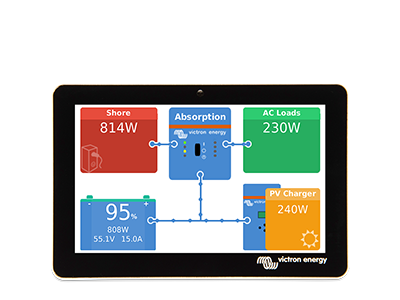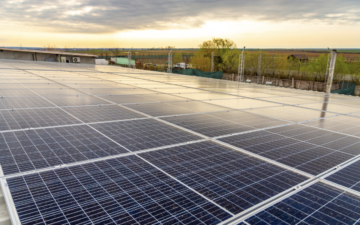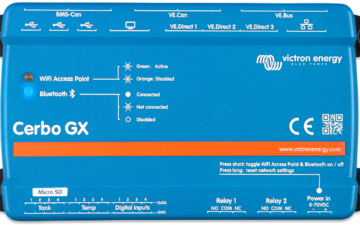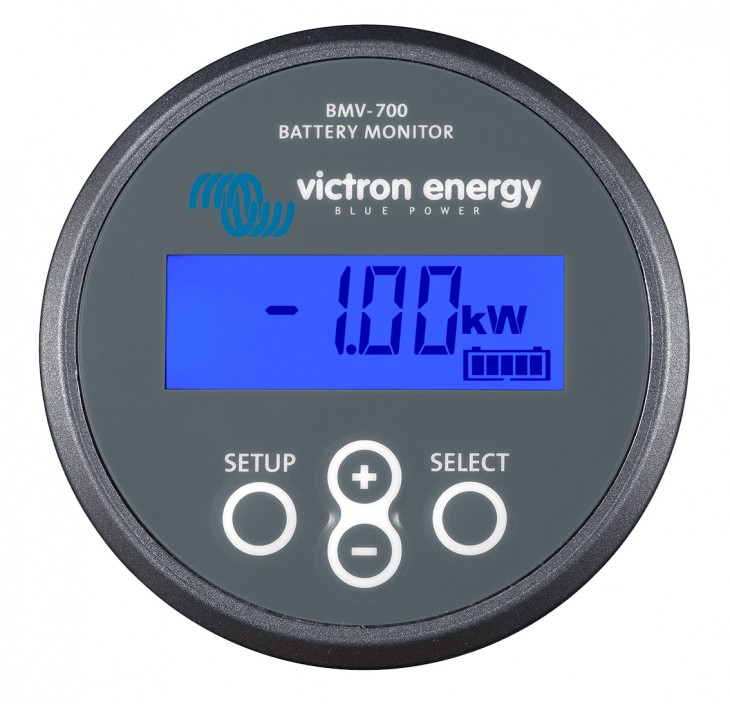
Matthijs recently sent me the new BMV-702 for evaluation. What immediately excites me, is the option to integrate the new features of the 702 with a Color Control GX for enhanced monitoring of my onboard systems, using the VRM site.
For now though, I’ve fitted the 702 to my boat and discovered lots of functional and operational improvements, compared to my older 600S. Here are some of my insights into the new 700 series.
Firstly, and I think importantly, the 700, 702 and 700H all retain the same dimensions and style of the BMV-600S series, along with the familiar Victron packaging. The physical installation is just like the 600S, so it was quick to change out the display. My shunt though, was very awkward to get to. Thankfully the BMV-600S series shunts and PCBs are compatible with the BMV-700 and 702 displays, so there was no need to fit the new shunt that came with the unit.
Here is a photo of my 702 installed. Apologies for the mobile phone camera image quality. High resolution Victron images of the new 700 series are here.
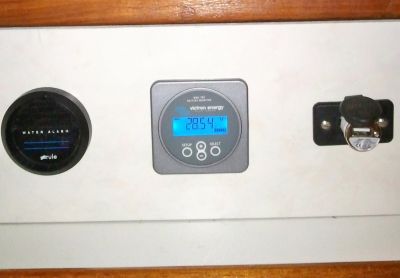
The new setup wizard with scrolling text was straightforward enough. Once I’d changed the default battery capacity of 200 Ah to 260 for my bank, I started to check out the new readings and options. Here is what I’ve learned.
Ease of Operation and Setup
By changing the way the buttons and menu works, operation is now easier. The use of scrolling text for the setup and history menus, simplifies matters. Now, you need no longer remember the meaning of H1, H2, H3 etc. The BMV-700 Series will first let the name of the chosen item scroll by, and then show you the value. For the more familiar user, the scrolling text can be skipped by pressing one of the buttons.
Improved Information
The read-out now includes Watts in addition to the basic information of Volts, Amps, Amp Hours, State of Charge and Time To Go. A SOC bar is also included in the bottom right of the read-out as you can see in my photo above. At the top left of the screen, in text, the display also shows which value you are monitoring. In this case it is my ‘Main’ propulsion bank.
There are two new historical values also: total kWh discharged and kWh charged.
I particularly like the new instant Watts read-out. Now I can compare power used with actual boat speed. I use electric propulsion on my boat. This is a handy feature and saves me doing sums in my head! My old 600S can now be used for an inverter bank I intend to fit. In the meantime it’ll come in handy for monitoring the battery for my electric outboard for my dinghy. Waste not, want not.
Increased Options
The BMV-602 had just one function for the secondary voltage: starter battery voltage.
Now the BMV-702 has a choice of one of three things it can do with the second input:
- measure starter voltage
- measure mid-voltage (and give a warning if the battery string is getting out of balance)
- measure the battery temperature
Note, this last one requires a temperature sensor accessory, which has to be purchased separately.
These modes also come with their own readouts and additional history values
In my case, with multiple 12V batteries in series, I think the midpoint voltage monitoring will be of most value. Why jeopardize your not insignificant investment in batteries for the sake of the price of a good battery monitor? If a cell or a battery is going down, now you can be alerted with an alarm and take action. Personally I think my BMV easily pays for itself with these new monitoring options.
So those are my principal insights into the BMV-700 series. Below, I’ve listed all the differences.
Key Enhancements
• Improved LCD Read-Out
• Simpler Operation and Setup
• Retention of History Data
• SOC Indicator Bar
• Calculates Watts
• Computes kWh Charged and Discharged
• Temperature Monitoring (BMV-702)
• Mid String Voltage Monitoring (BMV-702)
• Auxiliary/Starter Battery Monitoring (BMV-702)
• VE.Direct Communications Port
• Relay Invert Function
• Same Price
Models
BMV-700 (R)
BMV-702 (R)
BMV-702 Black (R)
BMV-700H
Functional and Operational Improvements
Clearer LCD Read-Out
The segments are bolder and larger, utilizing two LEDs for the backlight instead of one. By using a different LCD technology, this has increased the contrast. Whilst the changes are subtle, they make a tangible difference. The backlight now has the choice of an always on function, if desired, for low light conditions.
Retention of History Data
The memory of the history data is no longer lost with a loss of power to the monitor. The BMV-600 would lose all history data (H1 to H16) in such an instance. This is no longer the case with the BMV-700.
Integration with other Victron Products
Using the free Victron Remote Management (VRM) website portal, integrated system information via a Color Control GX can display your current system status and energy flow. The site is accessible via a web browser or by using the free iPhone and Android apps.
VRM Website – https://vrm.victronenergy.com/
iPhone VRM App – https://itunes.apple.com/us/app/vrm/id658834560?mt=8
Android devices https://www.victronenergy.com/support-and-downloads/software#victron-vrm-app
Other Improvements
The data connection on the back is now a proper socket, instead of a pin-header and can only be fitted one way.
The new communications protocol is called the VE.Direct protocol which improves on the old BMV or text protocol, allowing the advanced ability to change settings, such as the programmable relay switching on and off.
Note. All future small form factor Victron Products that are too small for a VE.Can Communications Port will use the new VE.Direct Communications Port, as now fitted to the BMV-700 series and MPPT 70/15 and 75/50.
Documentation
BMV-700 Series – https://www.victronenergy.com/battery-monitors/bmv700/
I hope the above helps. If you have any queries, before you take delivery of your new stock, feel free to question us here.



